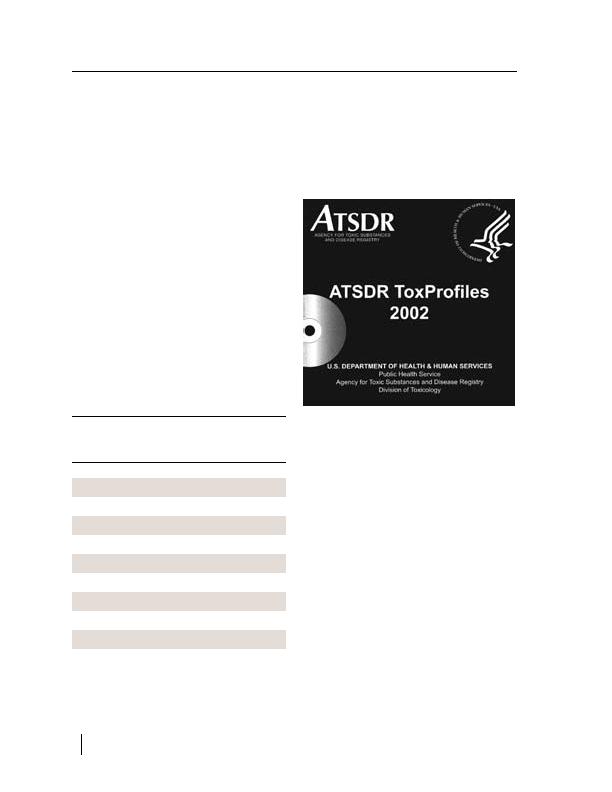
Register on October 25, 2001 (66 FR 54014).
The priority list is revised and published every
The top substance on the 2001 Priority List of
two years, with a yearly informal review and
revision. Thus, in October 2002, a draft priority
lead and mercury (see Table 1).
list was developed. In October 2003, a revised
priority list will be developed and published.
Along with the publication of the revised prior-
ity list in October 2001, ATSDR also published
an updated Completed Exposure Pathway Site
Count Report. A completed exposure pathway
(CEP) is an exposure pathway that links a con-
taminant source to a receptor population. The
it thus lists the number of sites at which a sub-
stance has been found in a completed exposure
pathway. The substance found in a completed
exposure pathway at the most sites was lead,
Table 2).
Table 2.
Hazardous Substances Found
Most Frequently at Sites with
a Completed Exposure Pathway
(CEP)
Number of sites with
Preparation of
substance in a CEP
Toxicological Profiles
Substance
All Sites
NPL Sites
CERCLA, as amended, requires ATSDR to pre-
Lead
359
238
pare toxicological profiles for each hazardous
substance on the CERCLA Priority List of
Trichloroethylene
319
271
Hazardous Substances. These profiles summa-
Arsenic
267
176
rize the current scientific literature and interpret
Tetrachloroethylene
236
190
available toxicologic and epidemiologic infor-
mation to determine levels of significant human
Cadmium
176
123
exposure regarding the substances.
Benzene
174
128
ATSDR also provides toxicological profiles at
169
113
the request of the Department of Energy (DOE).
Twenty-four toxicological profiles were under
VOCs
162
118
development as final versions or drafts for
PCBs
152
104
public comment during fiscal year 2002. These
profiles covered CERCLA substances and non-
Mercury
136
82
CERCLA substances identified by DOE (See
Appendix B for a list of toxicological profiles
completed in fiscal year 2002). The public com-
ment period has ended for the five toxicological
32 chapter 2


 Previous Page
Previous Page
